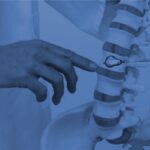Sports medicine plays a major role in helping athletes heal and return to activity. Sports doctors help athletes heal before and after surgery. They focus on strength, mobility, and full body recovery. These doctors understand how injuries affect performance and movement. Their goal is to guide patients back to activity safely and confidently.
Athletes face both physical and mental challenges during recovery. Sports doctors help manage those hurdles with a clear plan. They combine medical knowledge with hands-on support. Every step they take leads to better long-term results.
Preparing for Surgery with a Strong Plan
Before surgery, sports doctors prepare the body by strengthening muscles around the injured area. This support reduces strain on healing tissues. A stronger body can heal faster and more effectively. Flexibility and range of motion are also key focuses during this phase.
Doctors guide athletes through exercises to improve movement and reduce stiffness. These routines help joints move more freely. Better mobility leads to smoother and quicker recovery. Mental preparation matters as much as physical readiness for surgery.
Rehabilitation Begins Right After Surgery
Recovery begins the moment surgery ends. Sports doctors start with pain control and gentle movement. They monitor swelling and prevent complications. This early stage helps the body begin healing.
Rest is good, but total stillness can slow progress. Doctors guide small movements or stretches to support healing. These actions improve circulation and prepare for physical therapy. As recovery continues, light strength training helps rebuild lost muscle and maintain body engagement.
Returning to Strength and Movement
Once the body achieves stability, doctors shift their focus to restoring full range of motion with tailored exercises. These customized routines include stretching, resistance training, and low-impact workouts designed to rebuild strength and flexibility. Patients gradually learn to move fluidly without experiencing pain or weakness, which supports proper recovery. This phase prepares the body to handle more dynamic activities safely.
In addition to motion restoration, doctors emphasize improving balance and coordination to ensure athletes return to their sport confidently. The exercises often replicate sport-specific movements to train the body as a cohesive unit, enhancing overall performance. Light agility drills are introduced to prepare athletes for sudden turns, jumps, and impacts. This comprehensive approach helps reduce injury risk while optimizing athletic readiness.
Safe Return to Sport and Long-Term Care in Sports Medicine
The final rehab stage focuses on returning to sport through targeted workouts designed by sports medicine professionals. These sessions match each athlete’s goals and needs. Game-like drills and high-level conditioning are included to simulate real competition. Each workout helps bring the body closer to peak performance.
Sports medicine doctors also review body mechanics and movement patterns for safety. They teach techniques that reduce strain and prevent injury. These skills improve performance and support long-term health. Even after returning to play, ongoing care in sports medicine builds a stronger, more durable body.
Take the Next Step Toward a Stronger, Safer Recovery
Sports doctors collaborate closely with therapists, surgeons, nutritionists, and mental health professionals throughout recovery. This team approach ensures every aspect of healing is addressed. Nutritionists support healing with tailored diet plans, while mental health experts provide emotional care. Together, they help athletes regain strength to move, train, and compete safely again.
Related Articles
The Importance of Preventive Dentistry: How Regular Checkups Save Your Smile
How Dental Crowns Support Teeth After Root Canal Treatments





